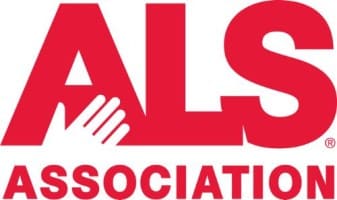The ALS Association is pleased to announce the launch of a new collaborative effort with TARGET ALS to perform whole genome sequencing from people who have died from ALS, to be used for research to better understand the disease and ultimately develop new treatments.
Funding from The ALS Association and the Tow Foundation will be used by The New York Genome Center to determine the entire genetic sequence of people with ALS who have elected to donate their tissues after death to the Target ALS Postmortem Tissue Core at Barrow Neurological Institute/Saint Joseph’s Hospital in Phoenix, Columbia University in New York, Georgetown University inWashington D.C., Johns Hopkins University in Baltimore and University of California at San Diego.
ALS is a progressive neurodegenerative disease that affects nerve cells in the brain and the spinal cord. Eventually, people with ALS lose the ability to initiate and control muscle movement, which often leads to total paralysis and death within two to five years of diagnosis. For unknown reasons, veterans are twice as likely to develop ALS as the general population. There is no cure, and only one drug approved by the U.S. Food and Drug Administration (FDA) modestly extends survival.
The Target ALS Postmortem Tissue Core is a unique resource in the field of ALS research, providing high-quality post-mortem tissue for academic and industry researchers throughout the world. The addition of whole genome sequencing to the clinical and pathological data collected on each individual will greatly expand the utility of this resource, providing researchers the ability to explore connections between genes, disease course, and tissue changes.
The New York Genome Center is a world leader in whole genome sequencing for ALS and other diseases. Through its Consortium for Genomics of Neurodegenerative Disease, the Center harnesses state-of-the-art genetic, genomic, and bioinformatics tools to gain insights into motor neuron disease mechanisms, and uses this knowledge to identify new diagnostic and therapeutic approaches to these devastating diseases. The ALS Association and its Greater New York Chapter committed an initial $2.5 million dollars towards a dedicated ALS program at the center. These funds matched a $2.5 million gift from The Tow Foundation in support of this initiative.
“We are very pleased to be able to combine whole genome sequencing with post-mortem tissue banking,” said Association Chief Scientist Lucie Bruijn, Ph.D., M.B.A. “This will give researchers the ability to ask and answer important questions that link gene-based mechanisms to their effects on tissues in people with ALS. This kind of inquiry is needed to develop effective therapies against the disease.”
‘We are delighted that this collaboration will enable researchers’ access to whole genome sequencing data from well-characterized human postmortem tissue,” said Target ALS Executive Director, Manish Raisinghani, M.D., Ph.D. “The ability to query ALS biology in human-based systems is critical to identify and validate new therapeutic targets for the treatment of this disease.”
About The ALS Association
The ALS Association is the only national non-profit organization fighting Lou Gehrig’s Disease on every front. By leading the way in global research, providing assistance for people with ALS through a nationwide network of chapters, coordinating multidisciplinary care through certified clinical care centers, and fostering government partnerships, The Association builds hope and enhances quality of life while aggressively searching for new treatments and a cure. For more information about The ALS Association, visit our website at www.alsa.org.
About The Tow Foundation
The Tow Foundation, established in 1988 by Leonard and Claire Tow, funds projects and collaborative ventures in fields where there are opportunities for breakthroughs, reform and benefits for underserved populations. Investments focus on the support of innovative programs in the areas of juvenile justice reform, groundbreaking medical research, cultural institutions, and higher education. For more information, visit www.towfoundation.org.
About The New York Genome Center
The New York Genome Center (NYGC) is an independent, nonprofit at the forefront of transforming biomedical research and clinical care with the mission of saving lives. As a consortium of renowned academic, medical and industry leaders across the globe, NYGC focuses on translating genomic research into clinical solutions for serious disease. Our member organizations and partners are united in this unprecedented collaboration of technology, science, and medicine. We harness the power of innovation and discoveries to improve people’s lives – ethically, equitably, and urgently. Member institutions include: Albert Einstein College of Medicine, American Museum of Natural History, Cold Spring Harbor Laboratory, Columbia University College of Physicians and Surgeons, Cornell University/Weill Cornell Medical College, Hospital for Special Surgery, The Jackson Laboratory, Memorial Sloan Kettering Cancer Center, Icahn School of Medicine at Mount Sinai, NewYork-Presbyterian Hospital, The New York Stem Cell Foundation, New York University, North Shore-LIJ, The Rockefeller University, Roswell Park Cancer Institute and Stony Brook University. For more information, visit: www.nygenome.org.
About TARGET ALS
Target ALS is a privately funded international consortium of researchers from academic and biotech/pharma laboratories entirely focused on finding a treatment for patients living with ALS. We fund Research Consortia that have accelerated identification and validation of new targets for treatment of ALS, Springboard Fellowships to support work of emerging research leaders, and core facilities that lower barriers for cutting edge ALS research worldwide. For more information visit our website at www.TargetALS.org.
